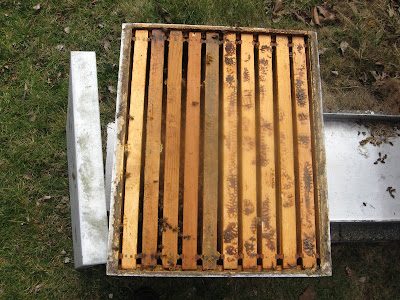The waggle dance is how bees communicate with one another to share information to the location of a foraging source. The food source could be pollen, nectar, water and even place trees from which to make propolis. The dance is an effort to recruit other foragers so when they leave the hive they can make a beeline to the source without having to waste time searching themselves for some forage. The waggle dance is very complex for a human to understand but bees can comprehend the directions from it easily. The length of the dance, the speed, and movement of the returning forager on the comb all give the foragers being recruited information to the location of the resource. The "map" that is given by a dancing bee comprises of the distance and direction from the hive. The angle to the sun is used for direction and the bees change their dance through the day to compensate for the sun's movement thought the sky. To learn more about the waggle dance visit NOVA Online to view
"Dances With Bees".
While looking in one of my colonies today I noticed a bee doing a waggle dance. After closer inspection of the dancing bee I noticed her pollen baskets had some pollen in them. This is the first sign of pollen that I have seen this year. Pictured below is a frame that has the dancing bee on it. It is the blurry bee. The camera wasn't fast enough for the movement of the waggle dance so the bee appears a little blurred. You really need to click on the picture to enlarge it to get a better view.

What I like about the picture is the five bees crowded together directly behind the dancing bee as in they are there in an effort to observe the waggle dance to get the directions. You can also see the yellow pollen on the dancing bee's hind legs if you look close enough.
In this next picture you can see by the blur that the dancing be is really getting with it. It looks like she is swinging her abdomen out farther in this picture. The other bees had to move out her way and are watching her from the side now too.

I put out some syrup feeders in the yard yesterday for some communal feeding. I also put out some dry pollen substitute. I have read that dry feeding pollen substitute will encourage or stimulate bees to gather pollen. From what I observed yesterday I can say this is true. While I was walking around the yard there were little powdered bees everywhere that were hovering low to the ground. I believe they were looking for flowers to gather pollen from because they looked just like they do in the summer when working the clover. They have not acted this way before I put the dry pollen sub out for them, or at least since last fall. It seems that one of the bees were stimulated enough to go out and bring in some natural pollen.
Thanks to the waggle dance I now know I have some pollen in the area for my bees. And thanks to you all of you who read my posts and click on the advertisements, I am a little bit closer to being able to get the new camera I need so I can take higher quality pictures to put on here for you to see. So thank you and give me a click so we can have some better pictures sooner.




